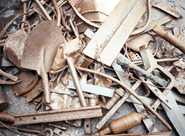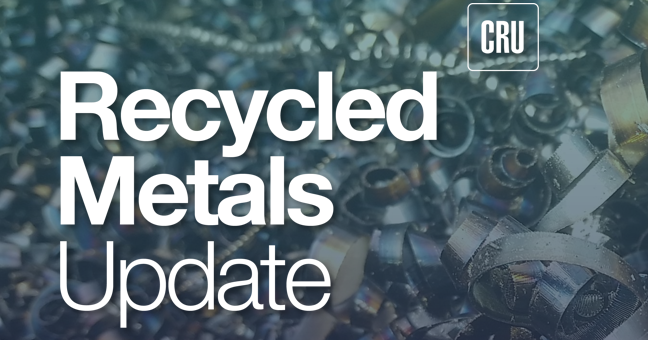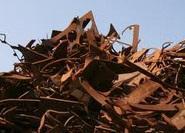Scrap Prices North America

Scrap Squeeze Ahead as World Switches to EAFs: McKinley
Written by Michael Cowden
June 18, 2021
The traditional correlations between finished steel and scrap prices have broken down this year, and historical spreads might remain off-kilter as more electric-arc furnace (EAF) mills come online globally, CRU Senior Analyst Ryan McKinley said.
Crude steel output via EAFs in North America is expected to grow by about 16 million metric tonnes, approximately 20%, between 2017 and 2025. That’s a “tiny portion” of EAF output growth of about 100 million metric tonnes expected globally over the same timeframe, McKinley said.
![]() “That is set to really tighten the world market for scrap. … So there are going to be some big challenges ahead for producers in scrap procurement,” he said.
“That is set to really tighten the world market for scrap. … So there are going to be some big challenges ahead for producers in scrap procurement,” he said.
McKinley made the comments at CRU’s recent virtual New York Steel Seminar.
In North America, for example, Canadian flat-rolled producer Algoma Steel has announced that it is considering switching from the integrated route – steel made via blast furnaces and coke ovens – to the scrap-based EAF route. “And I think the announcement by Algoma Steel may be followed by some others,” McKinley said.
Increased demand for scrap will be offset in part by increased supplies of ore-based metallics – think direct-reduced iron (DRI), hot-briquetted iron (HBI) and pig iron – that can be used as scrap substitutes. “Potentially we’ll see more pig iron produced here in the U.S. But overall it’s going to be more challenging to get your raw materials,” he said.
The U.S. scrap market has already had a taste of what’s to come.
Case in point: When COVID-19 first hit the U.S., automakers shut facilities more quickly than steelmakers. Prime scrap grades such as No. 1 busheling are a byproduct of automotive processes like stamping. And so prices for prime grades, after an initial pandemic plunge, snapped back upward on limited supplies.
And prime scrap availability has remained in tight supply over the last year because a global microchip shortage followed the pandemic. The chip shortage has continued to limit prime scrap generation – and to support higher prices.
The combination of reduced supplies and increasing demand partly explains why busheling prices are above their 10-year averages. But even obsolete grades, used to make rebar, are above 10-year averages thanks in part to strong demand from Turkey, which imports scrap from the U.S. to make rebar, McKinley said.
If auto production picks back up later this year, and if mill demand stays roughly the same, more availability of prime grades will allow busheling to fall back to its normal spreads with obsolete grades. But if the chip shortage persists, those spreads could remain wider than usual, he said.
Prime scrap is largely inelastic to price. Automakers will not stamp parts they don’t need because prices are high. Obsolete grades – think shredded scrap and heavy melting scrap (HMS) – typically see increased supplies when prices are higher because more scrap will be collected, more cars will be shredded and more buildings demolished.
And while spreads between primes and obsolete grades have expanded, those spreads are nothing compared to the gigantic gaps that have opened up between scrap prices and finished steel prices.
Scrap prices are at their highest levels in more than 10 years and are closing in on the all-time highs they saw in 2008. Flat-rolled steel prices surpassed their 2008 highs months ago and have continued to set new records every week despite mounting fears of a big correction in some corners of the market. “Usually steel pricing is a pretty good indicator of what happens to scrap pricing – but that has not been the case this year, and I would argue that it will not be the case for the rest of the year,” McKinley said.
Steel Market Update’s average hot-rolled coil price stands at $1,720 per ton ($86 per cwt), up 75% from $985 per ton at the beginning of the year and closing in on quadruple the 2020 low, recorded in August, of $440 per ton.
SMU’s average price for busheling scrap, meanwhile, is at $640 per gross ton, up 56% from $410 per gross ton at the beginning of the year and up a comparatively modest 151% from $255 per gross ton in August of last year.
“The two are kind of losing their connectedness,” McKinley said. “While technically correlated … No. 1 busheling prices should in theory be much higher than they are – to the tune of $90-100” per metic tonne.
The traditional spreads between shredded scrap and rebar have also broken down, even though rebar prices haven’t seen gains as dramatic as those in coil.
“There has been a break in the correlation between shredded scrap and rebar pricing – and I would argue the two are now pretty well disjointed,” McKinely said.
Shredded scrap has more impurities than prime scrap. But that’s not a barrier for rebar, which is a less demanding product than sheet steel.
By Michael Cowden, Michael@SteelMarketUpdate.com

Michael Cowden
Read more from Michael CowdenLatest in Scrap Prices North America

RMU: The most underappreciated scrap grade
Over the last several years, I have noticed widening spreads between #1 Heavy Melting Steel (ISRI 201) and Shredded (ISRI 210,211), as well as Plate & Structural (ISRI 232).

Domestic scrap tags flat in April
April scrap prices came in sideways in the US, sources told SMU.

RMU: Interest rates, weather hit Radius Recycling’s earnings
Low manufacturing activity and higher interest rates took a toll on Radius Recycling’s profits during the Oregon-based company’s most recent quarter. Radius reported a net loss of $34 million, or $1.19 per share, during its fiscal second quarter. In the previous quarter, Radius saw a net loss of $18 million, or 64 cents per share.

RMU: Northern buyers enter April scrap market sideways
Several large buyers in the North came into the market on a sideways basis from prices paid in March. The development comes after recent speculation about what prices US-based steelmakers would pay for scrap for April shipments.

Miller on scrap: Market seeks direction ahead of April buy
On the eve of the April ferrous scrap buy, there is no firm consensus on the market’s direction. The safe predictions are “soft” sideways to “strong” sideways. That may mean down $10 per gross ton (gt) to up $10/gt.
